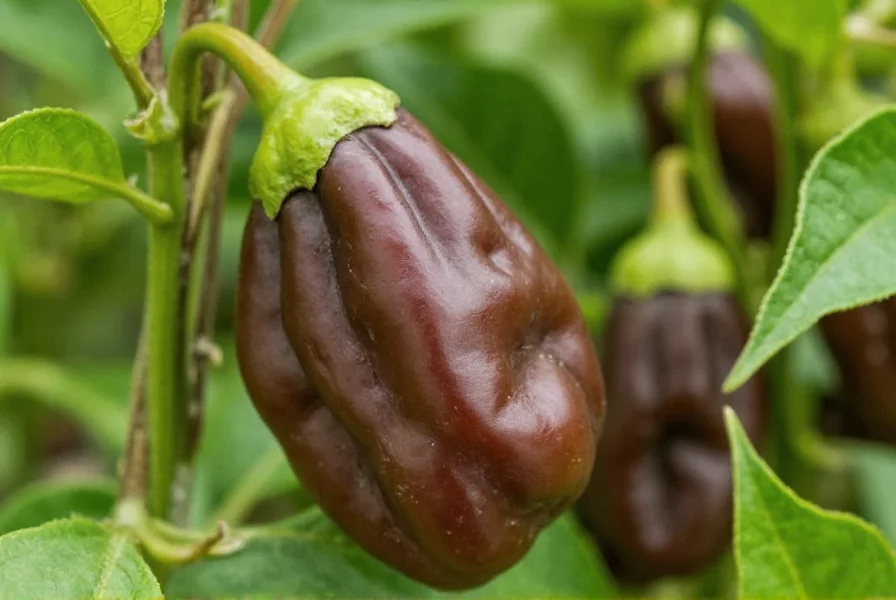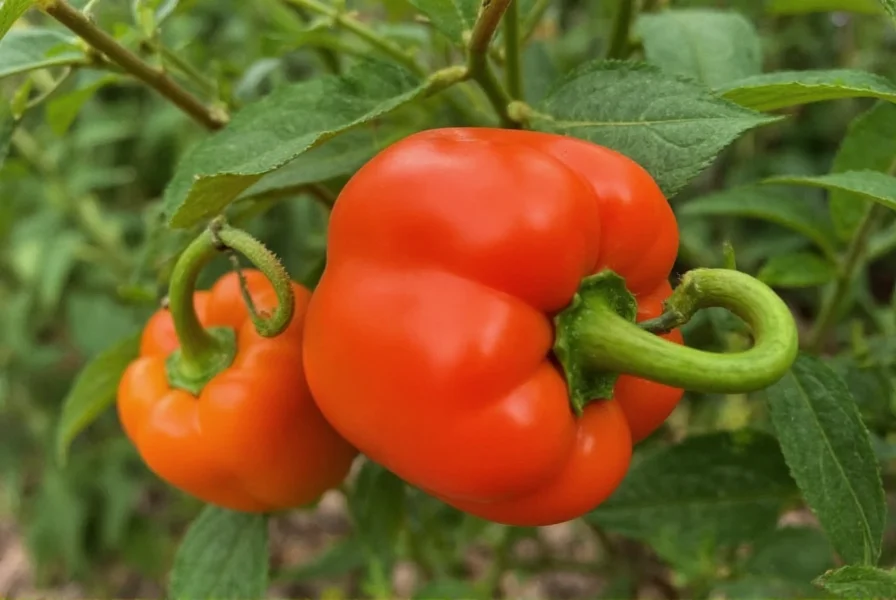The 7 Pot pepper family represents some of the hottest edible chili varieties cultivated today. Understanding these superhots requires examining their heat measurement, distinctive characteristics, and practical applications for culinary enthusiasts and growers alike.
Understanding 7 Pot Pepper Heat Levels
When discussing how hot is 7 pot pepper compared to other chilies, the Scoville scale provides essential context. While habaneros typically measure 100,000-350,000 SHU and ghost peppers reach 800,000-1,000,000 SHU, 7 Pot varieties consistently exceed these benchmarks.
| Pepper Variety | Scoville Heat Units | Heat Comparison |
|---|---|---|
| 7 Pot Douglah | 900,000-1,500,000+ | 2-3x hotter than ghost pepper |
| 7 Pot Primo | 800,000-1,200,000 | Slightly milder than Douglah |
| 7 Pot OMG | 1,000,000-1,400,000 | Among the hottest cultivated varieties |
| Habanero | 100,000-350,000 | Baseline for superhot comparison |
These measurements explain why 7 pot douglah scoville ratings often surprise even experienced chili enthusiasts. The heat develops gradually, starting with a fruity flavor before delivering intense, long-lasting burn that can last 20-45 minutes.

Varieties of 7 Pot Peppers
The 7 pot pepper varieties each offer unique characteristics while maintaining extreme heat levels:
7 Pot Douglah
Often called the "Chocolate 7 Pot," this variety features dark brown to black mature pods with a complex flavor profile combining fruitiness and earthiness. It's frequently cited as one of the hottest naturally occurring chili varieties.
7 Pot Primo
A slightly milder but still extremely hot variety with bright red mature pods. Primo offers better yield than some other 7 Pot types, making it more accessible for growers interested in growing 7 pot peppers.
7 Pot OMG
Developed in the United States, this variety features vibrant red pods and consistently high heat levels. Its name reflects the reaction many experience when tasting it.
7 Pot Jonathan
A yellow variety that matures from green to golden yellow, offering similar heat with a distinct citrus undertone that appeals to some culinary applications.
Culinary Applications and Safety
Working with 7 pot pepper uses requires careful handling and precise measurement. Chefs typically use these peppers in minute quantities to avoid overwhelming dishes. The distinctive fruity undertones make them valuable in hot sauces, specialty salsas, and Caribbean-inspired recipes.
When handling these superhots, always wear gloves and avoid touching your face. The capsaicin oils can transfer to sensitive areas and cause severe irritation. Never use blenders without proper ventilation, as the aerosolized capsaicin can become airborne.
Growing 7 Pot Peppers Successfully
For gardeners interested in how to grow 7 pot peppers, these plants require specific conditions:
- Long growing season (90-120 days to maturity)
- Warm temperatures (70-90°F ideal)
- Well-draining soil with consistent moisture
- Approximately 6-8 hours of direct sunlight
- Patience, as germination can take 3-6 weeks
Many growers start seeds indoors 8-10 weeks before the last frost. The plants typically reach 3-4 feet in height and produce numerous small, wrinkled pods that change color as they mature. Understanding 7 pot pepper growing conditions is essential for successful cultivation.

Flavor Profile Beyond the Heat
Despite their reputation for extreme heat, 7 Pot peppers offer complex flavor profiles that distinguish them from other superhots. Most varieties feature distinct fruity notes—often described as apricot, citrus, or tropical fruit—with underlying earthiness. This complexity makes them valuable to hot sauce makers seeking depth beyond mere heat.
The 7 pot pepper taste characteristics become particularly apparent when used sparingly in recipes where the heat doesn't overwhelm the palate. Many connoisseurs appreciate how these peppers can add both heat and flavor dimension to carefully crafted dishes.
Frequently Asked Questions
How does 7 Pot compare to Carolina Reaper?
While both are extremely hot, Carolina Reapers typically range from 1,400,000-2,200,000 SHU, making them generally hotter than most 7 Pot varieties (800,000-1,500,000 SHU). However, some exceptional 7 Pot Douglah specimens have rivaled Reaper heat levels. The Reaper features a distinctive stinger-shaped pod, while 7 Pots have more rounded, wrinkled appearance.
Can you eat 7 Pot peppers raw?
Technically yes, but consuming 7 Pot peppers raw is not recommended for most people due to their extreme heat. Even experienced chili eaters often experience significant discomfort. If attempting, use extreme caution—start with a tiny piece (1/8 of a small pepper) and have dairy products available to mitigate the burn. Most culinary applications use these peppers in cooked preparations where heat distributes more evenly.
How long do 7 Pot pepper plants live?
In tropical climates where they originate, 7 Pot pepper plants can live for 3-5 years as perennials. In temperate regions with seasonal frost, they're typically grown as annuals, though some gardeners successfully overwinter them indoors. With proper care including pruning and overwintering techniques, container-grown plants can survive multiple seasons even in non-tropical climates.
What's the best way to preserve 7 Pot peppers?
Drying and freezing are the most effective preservation methods for 7 Pot peppers. Dried peppers can be ground into powder for precise measurement in recipes. Frozen peppers retain flavor well and can be used directly in cooking without thawing. Pickling works but may alter the distinctive flavor profile. Always label preserved peppers clearly and store them away from children and pets due to their extreme heat.











 浙公网安备
33010002000092号
浙公网安备
33010002000092号 浙B2-20120091-4
浙B2-20120091-4